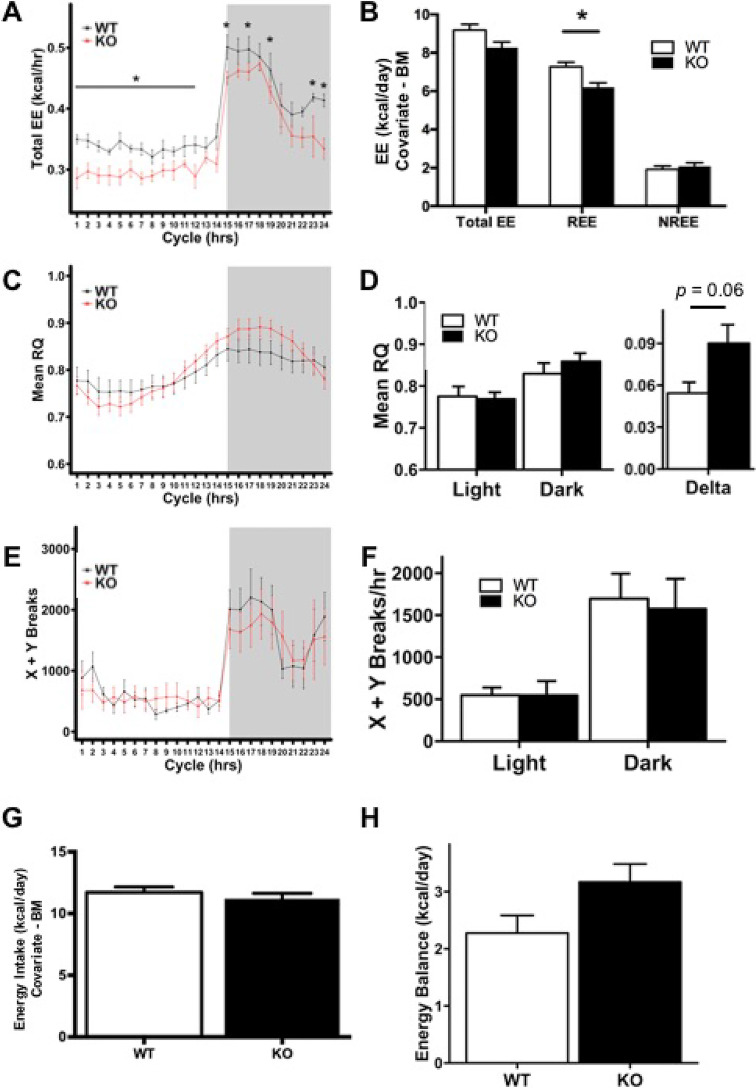Figure 1.
Hepatocyte-specific HNF4α-KO mice exhibit decreased resting energy expenditure (EE) during fed conditions. Indirect calorimetry performed on wild-type (WT) and hepatocyte-specific HNF4α-KO mice during 4.5 days of ad libitum normal chow feeding. (A) Mean hourly total EE in WT and HNF4α-KO mice over a 24-h cycle. Raw values have not been adjusted for body mass (BM) differences. (B) Daily total EE, resting energy expenditure (REE), and nonresting energy expenditure (NREE) in WT and HNF4α-KO mice. Means adjusted with BM used as a covariate for EE. (C) Mean respiratory quotient (RQ) over a 24-h cycle. (D, left panel) Mean RQ summarized by light and dark cycles. (D, right panel) Delta depicts the difference in RQ between light and dark cycles. (E) Activity of WT and HNF4α-KO mice expressed as the total X and Y beam breaks for each hour over a 24-h cycle. (F) Activity of WT and HNF4α-KO mice expressed as the total X and Y beam breaks per hour and summarized per light and dark cycles. (G) Daily energy intake in WT and KO mice with BM used as a covariate. (H) Daily energy balance in WT and KO mice. Gray background indicates dark cycle time point. Values are means ± standard error of the mean (SEM). Statistical significance determined by one-way analysis of variance (ANOVA) between WT and KO. *p < 0.05 between WT and HNF4α-KO.

